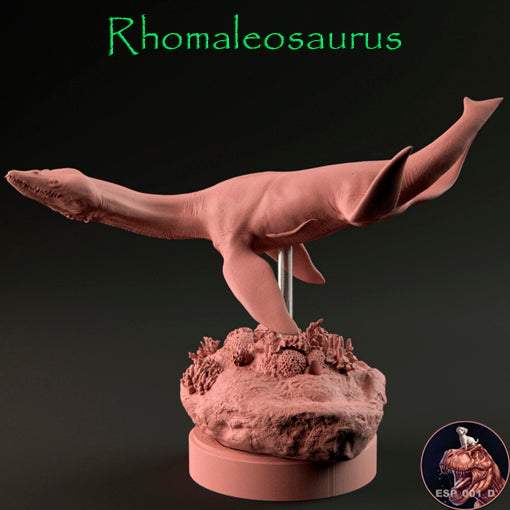
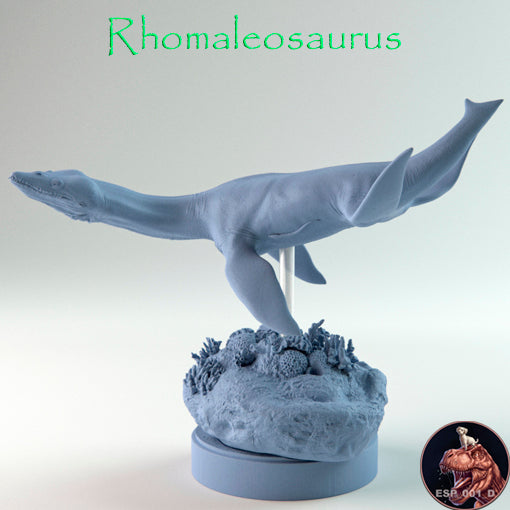
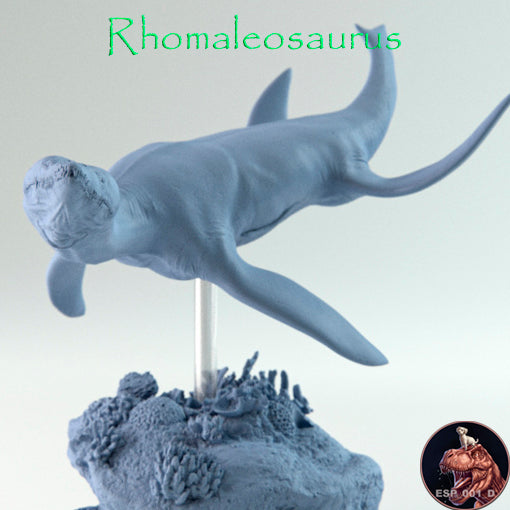
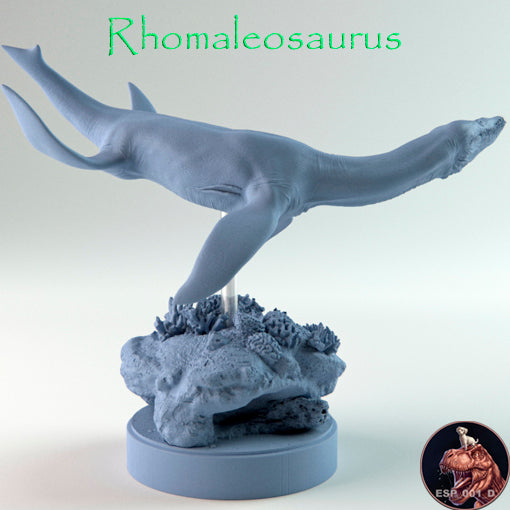
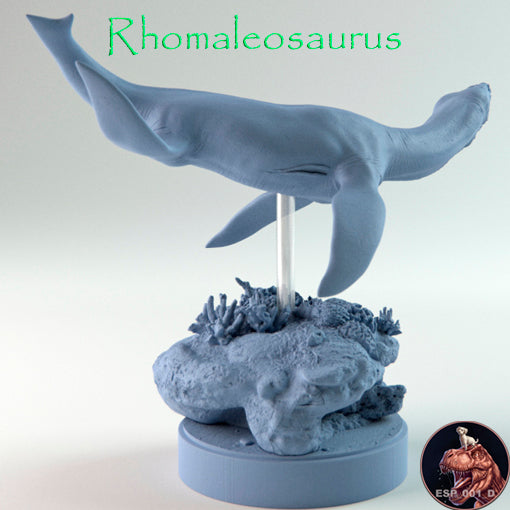
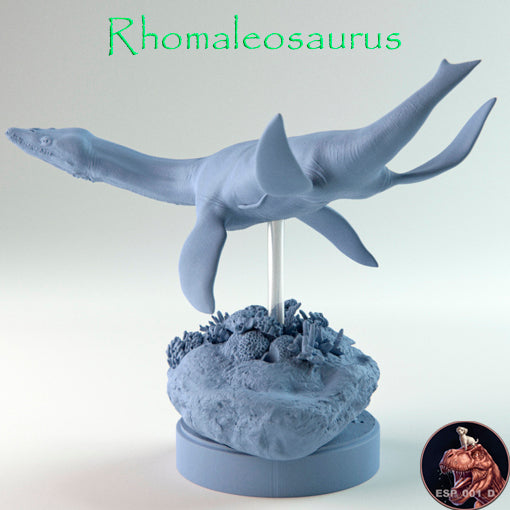



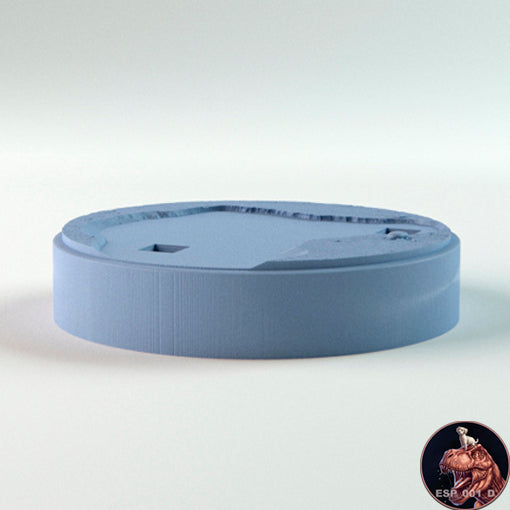
Rhomaleosaurus
Do you want another scale?
Contact us and we will make it possible!
How will you receive your replica?
In the unprimed and primed variants, you will receive the complete replicas except for the large models, where you will receive an assembly kit.
In the hand-painted variant, the replicas will be delivered complete.
How does the painting service work?
We created a private chat for you where you will have direct communication with our painter , being able to choose your preferred color schemes and follow the hand painting process closely.
Pairs well with

Rhomaleosaurus
If you have any questions, you are always welcome to contact us. We'll get back to you as soon as possible, within 24 hours on weekdays.
Shipping Information
Visit our shipping policy page to find all the information.
Customer Support
Give us a few details and we’ll offer the best solution. Connect by chat or email.
We are available 24/7.
FAQ’s
Visit our FAQ's page to find answers to common questions.
Contact Us
We'd love to hear from you. We are here to help. Visit our contact page to send us a message.
Product details
Rhomaleosaurus (R. megacephalus `Strong lizard´) is an extinct genus of marine reptiles belonging to the pliosaur family. It lived during the Middle and Late Jurassic, approximately 165-155 million years ago. Fossil remains of Rhomaleosaurus are known from various parts of the world, including Europe, Africa, and North America.
Rhomaleosaurus was a large marine reptile, with an elongated body and a large, powerful head. It is estimated that its average size could reach 6 meters in length, although some species may have been even larger. It had a short, stocky neck, with strong muscles that allowed it to move its head quickly and agilely.
One of the most notable features of Rhomaleosaurus was its sharp, cone-shaped teeth. It had a large number of teeth in its jaw, arranged in several rows. These teeth were ideal for catching and tearing at their prey, which probably consisted of fish, ammonites and other pliosaurs, and smaller marine reptiles.
Rhomaleosaurus's body was adapted for marine life. It had a robust and well calcified skeleton, with numerous vertebrae that gave it great flexibility in the water. Its limbs were short and fin-shaped, which allowed it to move easily and quickly in the aquatic environment. Its flippers were also provided with sharp claws, allowing it to catch and hold its prey.
In addition to its size and strength, Rhomaleosaurus also had a large brain compared to other marine reptiles of the time, indicating that it had good cognitive ability and complex social behavior. It is believed to have been an active and swift predator, capable of hunting in deep water and pursuing its prey effectively.
Rhomaleosaurus also had a distinctive feature on its skull: a long, narrow snout with a blunt tip. This gave it a unique appearance and set it apart from other pliosaurs. It is believed that it used its long snout to search for prey in cracks and crevices on the seabed, and then caught it with its sharp teeth.
Rhomaleosaurus reproduction is not yet fully understood, but it is thought to have laid eggs like most reptiles. Rhomaleosaurus fossils have also revealed evidence of bone lesions, suggesting that these animals could have violent encounters with other members of their species or with prey.
The Model Pose represents a specimen of Rhomaleosaurus swimming along the seabed in search of one of its possible prey.
Approximate measurements of the Rhomaleosaurus:
- Scale 1:60 - 87 x 66 x 46 mm H
- Scale 1:35 - 149 x 113 x 77 mm H
Information about aftershocks
Collector's item ; Hyper-realistic replica, highly detailed and with a high degree of scientific precision.
Made to scale, prototyped in resin and with a scenic base in most of the models offered. If you like miniatures, both for collecting and for painting, we offer you a wide variety of scale replicas; All of them related to dinosaurs, extinct prehistoric fauna and current fauna.
So if you love dinosaurs and animals as much as we do, this is your favorite store to collect and paint them :)
We are authorized distributors of all the replicas and figures we offer. We use 3D printers with 8K - 14K resolution, and high-quality resins with additives to improve hardness and flexibility, thus offering replicas of impeccable quality.
Different scales will be used to make the replicas (depending on the size of the species), although we are open to making other suggested scales upon request as long as they fit in our printing trays, for which you will have to contact us via email and request the required size.
Replicas are supplied with the option of airbrush priming in dark grey. If you require another colour, please let us know which one you prefer in the box with special instructions for the seller. Without priming, we do not guarantee that the resin will accept paint.
We also offer the option of choosing a professionally painted replica, which is agreed upon throughout its development with the painter, through a private chat available.
Complete replica (one piece): We supply complete replicas in those models that are small, and models that are medium, large or not very bulky, will have the prerogative of being presented as a complete replica or assembly kit as the case may be.
Complete replicas will be supplied separately from their base.
Replica assembly kit: We supply replicas whose models are large, very large or bulky, only with this option.
The indicated replicas (generally composed of base, head, body and tail) will come prepared for the subsequent assembly that will be required by the client, by sanding, putty, adhesive or technique chosen by the client.
All replicas are thoroughly inspected before shipping and will be carefully packaged to prevent damage during transport.
Information about the models
The poses of the models aim to represent each character in the most scientifically viable way, thus revealing the life and customs of prehistoric and modern fauna.
Each character has its own personality and develops in different life scenarios; birth, adolescence and play, hunting, feeding, fighting, courtship, death and many other scenes from their daily life, always from the creative perspective of their designers.
Handmade
All orders are individually prepared on the cutter for subsequent prototyping, obtaining a resin part that will require post-processing by manual and ultrasonic cleaning, support removal, ultraviolet curing, labeling and packaging.

We are authorized distributors
We offer both our own physical replicas and those that have been modeled by many of the best 3D designers, in order to offer you the greatest possible variety.
Frequently Asked Questions
If you have any questions about products, orders or shipping, please read our FAQ page to learn more.
